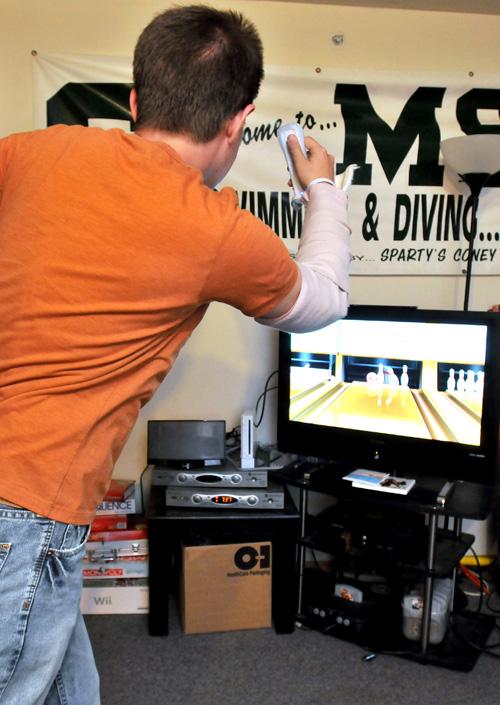Illinois hospitals use video games for therapy
Jun 24, 2008
Last updated on May 13, 2016 at 11:52 a.m.
Video games have made their way out of the family room and into the outpatient program of a Danville hospital.
Following a growing national trend in injury treatment, Provena United Samaritans Medical Center recently integrated the Nintendo Wii, a game system encouraging a wide range of physical motion, into its therapy program in hopes of adding a recreational yet beneficial spin on the recovery process.
From tennis and golf to baseball and bowling, patients are able to take advantage of the technology’s versatility by interacting with a variety of games under the watchful eye of their therapist.
Jennifer Beddow, the regional director of rehabilitation services at Provena, and other hospital staff members that work with the technology have found the Wii to be helpful for patients with a wide range of physical handicaps.
Get The Daily Illini in your inbox!
“The applications are pretty much endless: Carpal tunnel (syndrome), shoulder injuries, like rotator cuff injuries, we’ve used it on patients who had strokes,” Beddow said. “Almost all of the patients we see in outpatient therapy have some sort of weakness or pain or range of motion issues, so it’s really up to the therapist to be as creative as they can, to see how they can implement using the Wii as a tool.”
The research development department at Rehab Care Group, the company contracted to provide therapy services for Provena, developed a series of guidelines for use of the Wii in outpatient rehabilitation and first implemented its use a year ago.
Plans have been made to bring the game system to Urbana’s Provena Covenant Medical Center in the next month, though they have spent the last six months exploring the potential use of the Wii.
In Danville, the newest form of outpatient therapy has been met with open arms by both patients and therapists.
“Every patient that we’ve had use it has been very positive,” Beddow said. “We’ve had patients, 76 or 78 (years old), and they love it. They’re looking forward to using maybe their grandkids’ Wii when they go home.
“The patients seem to have a lot of fun with it, and they want to work harder and longer on the exercises the therapist is prescribing them.”
With the arrival of similarly new and improved forms of therapy came the pitfall of more outdated outpatient techniques.
In the past, patients found themselves picking up pennies and putting them in certain cups, or playing board games such as Connect Four – two activities which focus on strengthening fine motor skills.
Now therapists can fine tune the recovery process by pinpointing which Wii games are most beneficial to a patient’s respective injury.
“Today I had a lady who had a stroke, and she had some difficulty with fine motor skills in her hands, like being able to make a tight fist and grip, so she was working on the target practice one where she really had to move her arm around and pinch the controller,” Beddow said. “So it’s very individualized based on the patient and what they’re working on in therapy.”
While Beddow stressed that the Wii serves as a compliment to physical therapy, rather than a replacement, its initial success may lead to application of similar technology in the future.
“I think the therapists are just now looking to see what this game system can do, but I think it opens up the field for whatever new pieces of technology are out there that we could continue to use in therapy,” Beddow said.
“Anytime that we can add a little bit of new technology to therapy it’s definitely a positive for us.”






